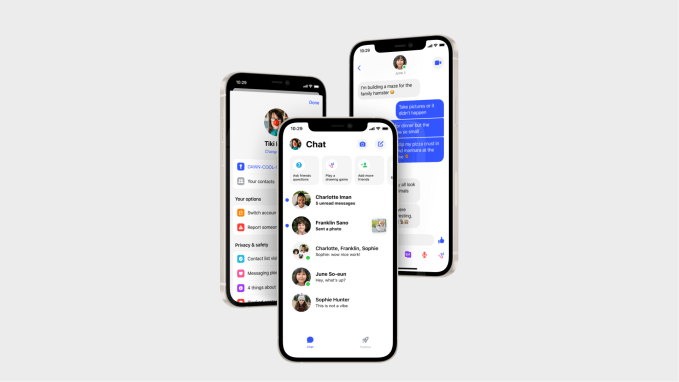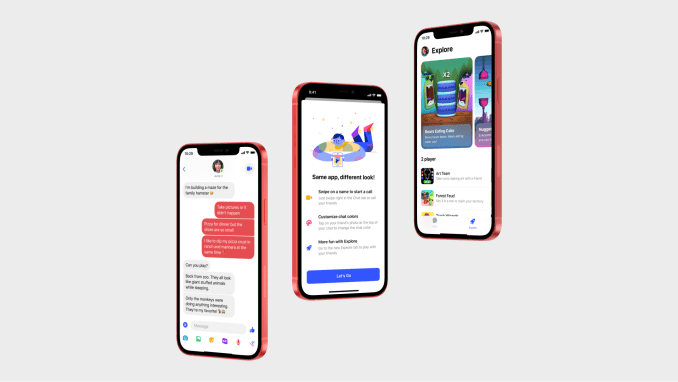The US property market has proven to be more resilient than you might have assumed it would be in the midst of a coronavirus pandemic, and today a startup that’s built a computer vision tool to help owners assess and fix those properties more easily is announcing a significant round of funding as it sees a surge of growth in usage.
Hover — which has built a platform that uses eight basic smartphone photos to patch together a 3D image of your home that can then be used by contractors, insurance companies and others to assess a repair, price out the job, and then order the parts to do the work — has raised $60 million in new funding.
The Series D values the company at $490 million post-money, and significantly, it included a number of strategic investors. Three of the biggest insurance companies in the US — Travelers, State Farm Ventures, and Nationwide — led the round, with building materials giant Standard Industries, and other unnamed building tech firms, also participating. Past financial backers Menlo Ventures, GV (formerly Google Ventures), and Alsop Louie Partners as well as new backer Guidewire Software were also in this round.
This funding takes the total raised by Hover to just over $142 million, and for some context on its valuation, it’s a significant jump compared to its last round, a Series C in 2019, when Hover was valued at $280 million (according to PitchBook data).
Today’s funding, that valuation jump, and the interest from insurance firms comes on the heels of huge growth for the company. A.J. Altman, Hover’s founder and CEO, tells me that in 2016 the startup was making some $1 million in revenues. This year, it’s expecting to hit “north of $70 million” in its annual run rate, with insurance companies and other big business partners accounting for the majority of its growth.
Hover was founded in 2011 and it first made its name with homeowners and the sole-trader and small business contractors working on their homes repairing roofs and fixing other parts of their structures. Its unique contribution to the market was a piece of software that bypassed a lot of the fragmented and hardest work involved in doing home repair by tying the whole process to the functions of a smartphone: its camera, and the use of apps.
In essence, it allowed anyone with an ordinary smartphone camera to snap several pictures of a space (up to 8), which could then be used to piece together a “structured” 3D image to better assess a job.
Those 3D images are not ordinary 3D pictures: they are dynamically encoded with information about materials, sizes and dimensions and other data critical to carrying out any work. A contractor using the Hover app could set up a system where these pictures, in turn, could be used to automatically create priced out quotes, with bills of material and timings for work, for their prospective clients. And these days, it also serves as an e-commerce portal for builders to order in the parts to carry out that work. (Hover now has around 35 patents on its tech, Altman said.)
The company has had a lot of traction in the market in part because of how it’s digitized an analogue process that had before it been firmly offline and lacking in transparency, in what is essentially a very fragmented market, with some 100,000 home repair firms in the US today.
“The home improvement segment one of the few that is not online,” Altman said. “For example, if I needed a new roof, it’s not that easy to just tell me what that would cost. The reason is because someone has to pull dozens of measurements off a house before costing that out, estimating the time it would take to fix and so on. Hover built a pipeline that turns photos into all of those answers.” It currently has about 10,000 contractors using its app, Altman said, so there is still a lot of growth in that segment.
Altman said that in its early days, the company had something of a hurdle convincing people of the usefulness of having an app that let even the homeowner take pictures of an issue on a property in order to start the process of finding someone to fix it. That’s because even in an age where DIY is pretty commonplace — and The Home Depot, incidentally, is also a previous backer — many builders see that role as theirs, not their clients.
That has changed a lot, especially in the last year in the age of a global health pandemic that has driven many to reduce social contacts to help contain the spread of the virus.
“Eliminating the need for on-site home visits is a huge deal, but we were spending a lot of time convincing some before Covid that this was a good idea,” he said. “The Covid experience — whether it involved an insurance carrier or contractor — didn’t like the idea of engaging a homeowner, asking them, to do that work.” That has shifted considerably, he said, with many now asking for this option.
Insurance is the fastest-growing segment of its business, Altman said, where insurers are integrating their apps with Hovers, sending out links to customers to snap pictures that then get automatically sent to the insurance app to make customers good on claims.
“It’s important to us that we provide our customers with the best possible experience, and HOVER’s technology helps us to do that by creating a simpler, faster and more transparent claims process,” said Nick Seminara, executive vice president and chief claims officer of Travelers, in a statement. “We see a tremendous opportunity for HOVER in the insurance industry, and we’re pleased to continue our partnership and invest in their future.”
Longer term, there are a number of areas where you could imagine Hover’s technology to apply. The company is already doing a lot of work in commercial buildings, and the next step is likely going to be expanding to more interior work, including home design and decor.
This is a huge market where you could see tech like this linking up with the likes of home sales firms, where companies are able to not just market a home, but potentially fixer-uppers with all the planning work set out for how to fix it up when you buy it; and also of course the extensive landscape of e-commerce businesses selling home furnishings, electronics and more.
Many of these, like Ikea and Houzz, have already put in a lot of investment into leveraging newer tech like Apple’s AR platform to improve their user experience, and so the appetite to take things to the next level is definitely there.








